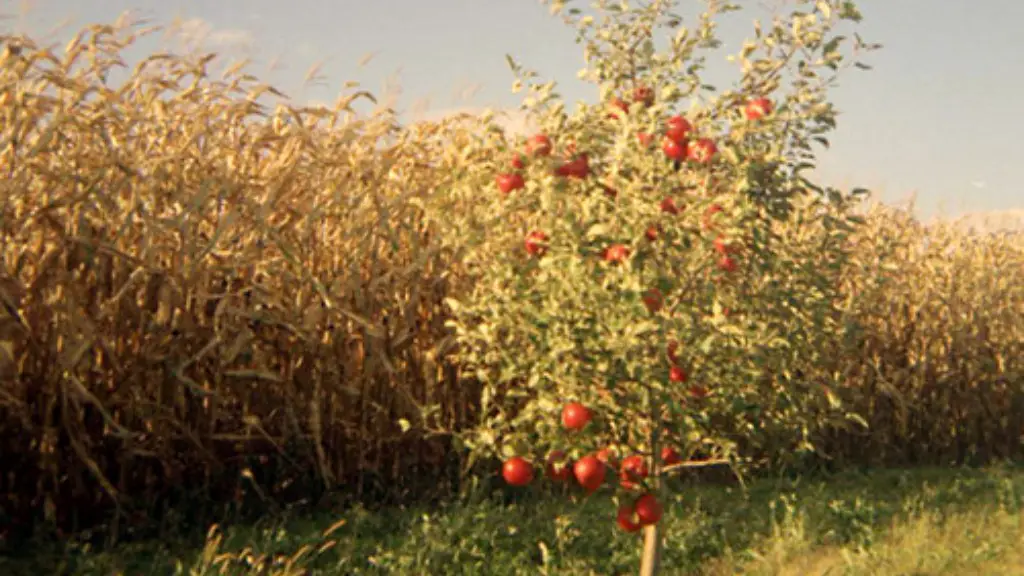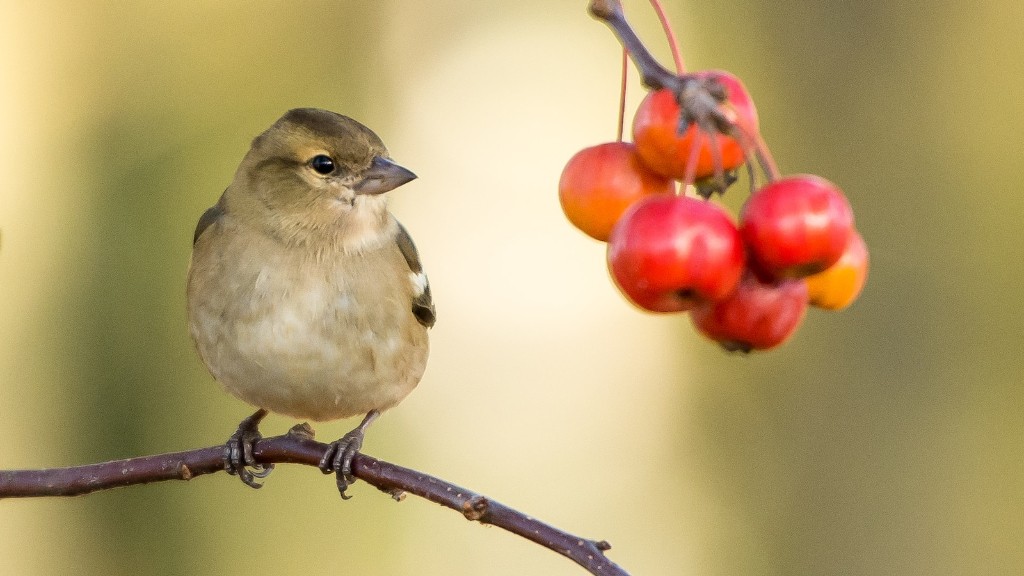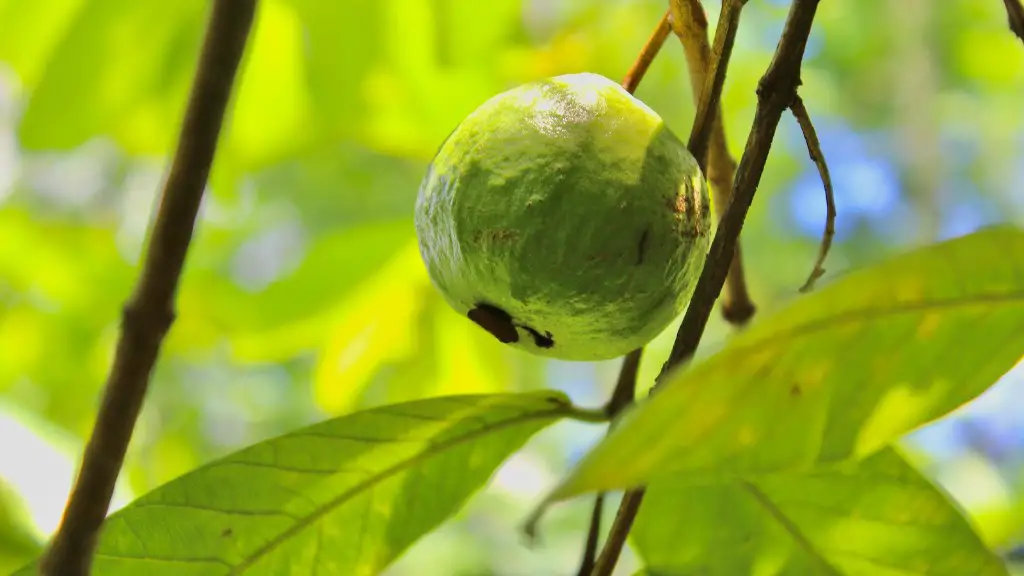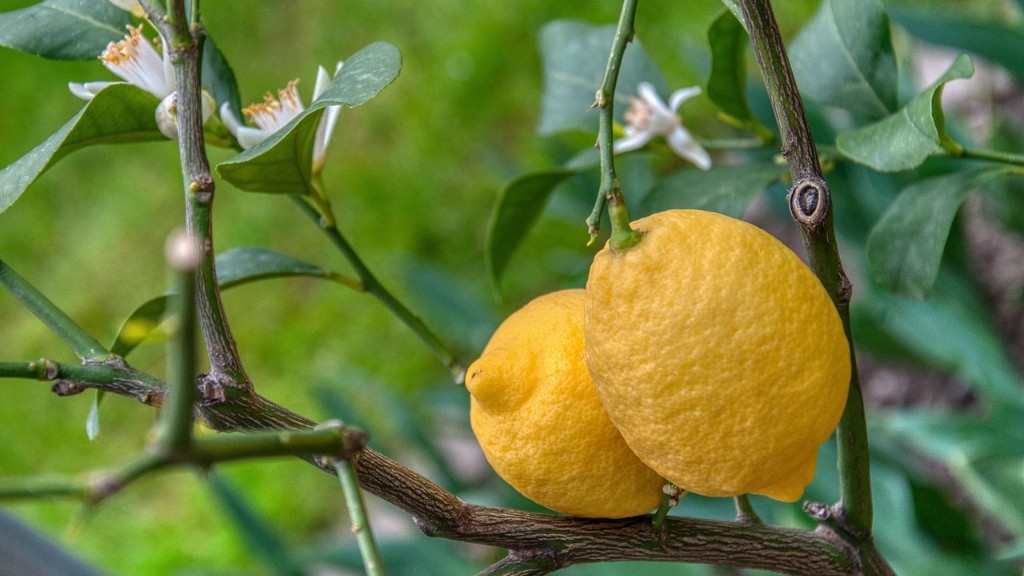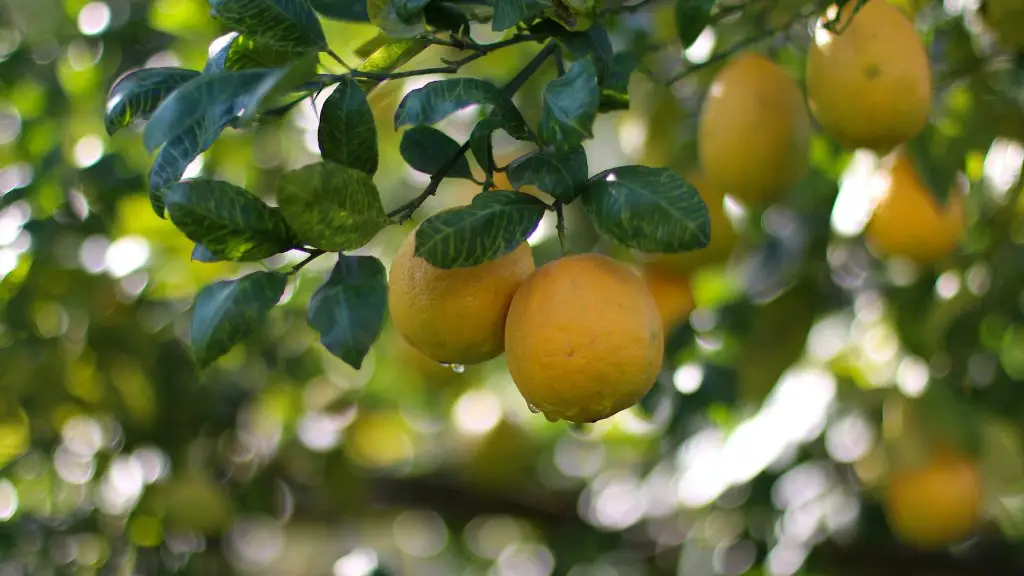An apple tree is an Angiosperm, or flowering plant. This means that it is a member of a group of vascular plants which contain seeds that are enclosed in fruits or capsules. Unlike gymnosperms, such as conifers, apple trees do not have cones containing their seeds. Instead, Angiosperms produce flowers which allow for a more efficient method of reproduction and widespread dispersal.
Angiosperms rely heavily on pollinators, such as bees and other insects, for sexual reproduction. Pollen produced by the male organs of the flowers must be transferred to receptive female organs in order for fertilization to take place. Apple trees require a variety of pollinators to ensure successful fertilization, including honeybees, bumblebees, and specific species of moths and butterflies.
Once pollination has occurred and the developing apple fruits are received by the pollinators, apples will typically begin to ripen and are ready for harvest within 3-4 months. Apples that are grown commercially are harvested when they reach their optimum size or colour, and can then be washed, graded, packaged, and shipped throughout the world.
Angiosperms are incredibly diverse, and the apple tree is just one of many examples of this important group of plants. Scientists estimate that there are more than 300,000 species of Angiosperms currently in existence, with new species being discovered each year.
Apple trees are a valuable resource to humans, not only providing us with a delicious and nutritious fruit, but also providing us with wood and timber for use in construction and furniture making. The economic value of apple tree cultivation is immense, with commercial apples worth billions of dollars to global economies.
Growth Cycle of an Apple Tree
A tree’s growth cycle begins with pollination, the transmission of pollen from one flower to another flower. Flowers are generally pollinated by bees, hungry for sweet nectar. Once pollinated,the ovaries in the flowers develop into the apple fruits. Developing apple fruits take between 60 to 120 days to grow and ripen. The moment the apples fall off the trees is the time they are considered to be ready for harvest.
Once harvested, apples can be processed and stored either in refrigerated warehouses or canneries. Refrigerated warehouses allow apples to stay fresh for periods of up to one year, whiles canneries process apples for preservation within minutes. The apple tree’s growth cycle is important for the commercial apple industry, because it provides a continuous supply of apples for processing and sale on the global market.
Most commercial apple varieties require annual pruning, fertilization, pest control, and maintenance in order to maintain healthy trees and increase productivity. Chemical or organic fertilizers and pesticides may be used, depending on the apple tree cultivar and the climate in which it is grown.
Apple trees are generally considered to have a relatively long lifespan, with some varieties having been cultivated for up to 50 years. Although, shorter-lived varieties may only live for 15-20 years. As apple trees reach maturity and production declines, growers may choose to replace them with other varieties.
Tree Varieties
There is an immense variety of apple tree cultivars available, which vary in terms of fruit size, shape, and taste. Common apple cultivars include ‘Red Delicious’, ‘Granny Smith’, and ‘Golden Delicious’. In addition to these, rare heirloom cultivars are being discovered and revived allowing individuals to experiment with new and interesting flavours.
Fruit size and shape depends largely on the genetic composition of the apple tree, however, the maturity of apples can be affected by environmental conditions. For example, apples may experience poor colouring and delayed ripening if the growing season is unusually cool and wet.
Tree size also varies among apple tree varieties, with dwarf varieties growing to a height of around 2-3 metres, while standard varieties may reach up to 5-6 metres. Dwarfs are ideal for small spaces, while standard varieties are best suited to larger gardens.
Apple tree varieties also differ in terms of the services they provide, such as cross-pollination groups and chilling requirements. Cross pollination is the process by which pollinators transfer pollen from one flower to another and ensures that fruit will set and mature. Chilling requirements refer to the number of hours per day that apple trees need to be exposed to temperatures of 7°C become dormant and complete their growth cycle.
Achieving a successful apple harvest requires careful consideration of the type of apple tree you are growing and the environmental conditions in which it is being grown. Apple tree cultivars are very diverse and so conditions will vary from cultivar to cultivar. As a result, it is important that those wishing to grow apple trees do their research first in order to find the most suitable cultivar for their particular climate and situation.
Harvesting and Marketing
Once the apple fruits have grown and matured, they must be harvested. This is usually done using specialized machinery, or by hand depending on the size of the orchard. Apples that are grown commercially are then graded, washed, and sorted, before being packed into boxes or bags and shipped out to distributors worldwide.
The majority of apples produced in the world are grown for the fresh market, with processed apples making up only a small portion of total production. Most processed apples are used to make apple juice or cider, while some are frozen, dried, or canned.
Apples are also becoming increasingly popular as a health food due to the numerous health benefits that they provide. Apples can contain up to 10% sugar and are also a rich source of vitamins, minerals, and antioxidants. Eating whole apples has been linked to improved cognitive function and better mental health, as well as helping to reduce the risk of certain types of cancer.
The marketing of apples can vary widely, depending on the target market and the type of apples being sold. Most commercially grown apples are sold to large retailers, while smaller growers may focus on selling directly to consumers via farmers markets or from their own roadside stalls. As such, the packaging and branding of apples will often vary, depending on the target market.
The apple industry is also an important source of employment for many people, with apple orchards providing jobs for farmers, engineers, technicians, marketers, and other professionals. As such, it is an important source of income for local communities and countries.
Conclusion
In conclusion, an apple tree is an Angiosperm, or flowering plant, and is a valuable resource to humans. Apple trees require pollinators, such as honeybees and moths, for reproduction and their growth cycle involves pollination, ripening of fruits, and harvesting. Apple trees also come in many varieties, have differing services which provide, and are harvested and sold on a commercial market. The apple tree is an important resource which provides a variety of benefits to society.
